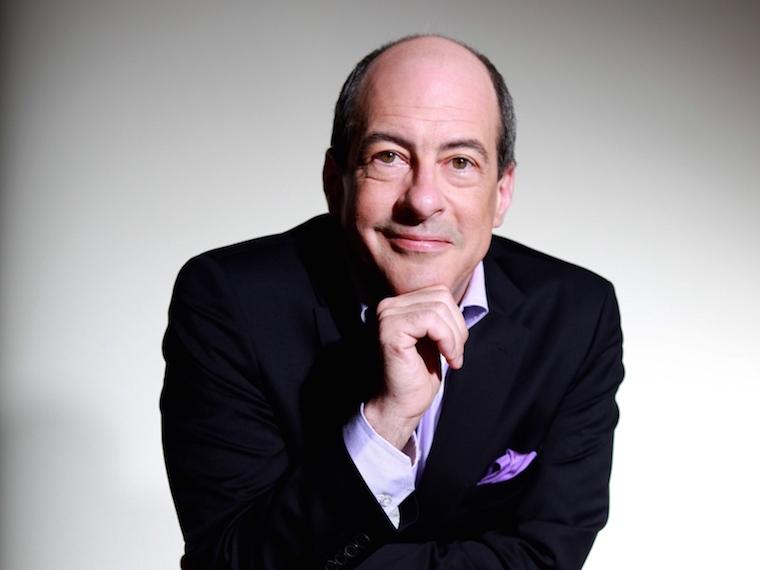New World musicians in the spotlight in short program

Although the return of Robert Spano was publicized as the main focus of the New World Symphony’s streamed concert on Saturday night, the longtime conductor of the Atlanta Symphony Orchestra and music director-designate of the Fort Worth Symphony only led two of the four scores on the abbreviated fifty-minute program. (Octandre by early French avant-gardist Edgar Varèse was originally scheduled but dropped from the program.) Still the works presented were all worthy, the performances uniformly excellent.
Ravel’s Introduction and Allegro for harp, flute, clarinet and string quartet was the evening’s most familiar offering. The players adroitly conveyed the music’s languid aura. Leah Stevens’ flute and Kelsi Doolittle’s clarinet struck the perfect balance of mellow sonority with tonal gleam. Harpist Phoebe Powell deftly navigated the arpeggiated glissandos and bursts of melody. Her long cadenza near the score’s conclusion was marked by superb instrumental control and finely nuanced dynamics. Violinists Yanki Karatas and Michael Turkell, violist Sam Pedersen and cellist James Churchill formed the well-balanced string contingent.
A new arrangement of Shining Gate of Morpheus for horn and strings by Jamaican-born, British-based composer Eleanor Alberga received its premiere.
Alberga is a post-modernist composer. Her score freely mixes lyricism with a spiky edge, chromaticism and atonal murmurs. The fourteen-minute work is compelling, beautifully crafted and skillfully orchestrated. Alberga exploits the viola’s dark timbre in repeated haunting solos. Scott Leger articulated the long horn lines with aplomb and displayed showmanship in the fast leaps between the instrument’s registers in the concluding section. The score ends effectively with a fade out rather than a flourish. Spano brought energy and focus to the string writing.
Among Arnold Schoenberg’s Viennese circle, Anton Webern occupied a singular position as a sculptor of instrumental timbres. Although his body of works is small, Webern’s brand of atonality is marked by delicacy and softness, combining motivic particles into sonic gems.
The Concerto for Nine Instruments (1934) is one of his finest and most intricate creations. At once moody and uplifting, this brief work brilliantly displays the color palette of the individual instruments. Spano made his early reputation as a specialist in complex contemporary scores. That expertise was fully evident in the incisive focus, transparency and definition he drew from the players. Standout solos from flutist Shantanique Moore, oboist Joo Bin Yi and pianist Thomas Steigerwald highlighted the outstanding corporate effort.
Conducting fellow Chad Goodman has been thrust into the spotlight this pandemic season and he once again was on the the podium for Stravinsky’s Suite from L’Histoíre du Soldat (A Soldier’s Tale). Stravinsky and librettist C.F. Ramuz’s play with music is a variant on the Faust parable. For the tale of a beleaguered soldier who trades his violin with the devil in return for wealth and pleasure, Stravinsky crafted a score for seven instruments that fuses indigenous Russian folk influences with neo-classism to delightful effect.
Goodman captured the irony of “The Soldier’s March” and the mock heroics of “Royal March.” He properly emphasized the sudden clashing dissonances in “The Devil’s Dance.” Margeaux Maloney’s violin perfectly encapsulated the gypsy-tinged folk rhythms and bravura gymnastics. The elegance of Jesse McCandless’ clarinet and spooky sound of Amelia del Cano’s bassoon conjured up the lonely quietude of the “Pastorale.” Percussionist Kevin Ritenauer had the last word with a flashy timpani solo in “The Triumphant March of the Devil.” Goodman drew out the tart harmonics and clashing instrumental colors of Stravinsky’s scoring.
Stravinsky’s seven movement suite only gives a preview of this most unique among the master’s theater pieces. With its high-tech lighting and video components, the New World Center would be the ideal venue for a future full staging of this opus with actors, ballet dancers and acrobats. That type of presentation would play a vital role in fulfilling the New World Symphony’s mission for players and audience alike.
The New World Symphony plays Mozart’s Wind Serenade in C Minor, Nina Šenk’s da kehrte die Ruge ein, Wagner’s Siegfried Idyll and Joseph Bologne’s Symphony No. 1 streaming 7:30 p.m. June 5. nws.edu
Posted in Performances
Leave a Comment
Sun May 23, 2021
at 11:56 am
No Comments